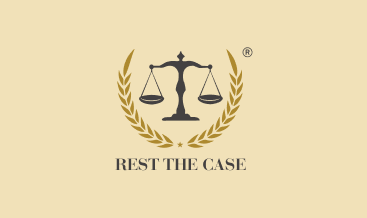Books
THE ECONOMIC STRUCTURE OF CORPORATE LAW, BY – FRANK H. EASTERBROOK

The law and economy have a great impact on each other. Economics is a subject based on human behaviour that plays a very significant role in many areas of the law. The advent of economics in direction makes it very easy for a spectator to analyse the economy and the law as a whole. However, it is gaining popularity due to some renowned economists and federal judges.
Even one of the eminent duos of a federal judge and renowned professor, i.e., Frank H. Easterbrook and Daniel R. Fischel have successfully displayed the impact of economic analysis on corporate law in their book "The Economic Structure of Corporate Law".
The outcome is another remarkable example of fusion of the close exposure and theoretical assertion to supporting evidence (basically in the context of share market events research) that has been distinctive of the company's financial and economic literature over the past two decades.
Opinion on the Publication
Both the authors are pioneers in their own right. The combination of their forces has created a fantastic work in the form of highly insightful as well as an incredible write-up. The book has an ultimate presentation of economics and law in the corporate area.
It is a wonderful explanation of rationale of each of the main foundations of corporate law. The book links economic logic for rules of companies, and management must abide by. Moreover, this book combines and builds on many pieces of law review published in the early 1980s, which have reformed the history of securities, corporate policy and law.
It is recommended as a must-read publication for those who are interested in corporate law.
What does the author want to convey?
The author concluded that practices and rules of corporate law resemble statutory arrangements that would be achieved by the parties if they agreed at zero expenses and masterfully executed their deals on any contingency.
But it is expensive to bargain and executes corporate law because of its rules and compliance structures that regulate relationships with those that contribute their capital to such venture enterprises. The author analyses the reasons for believing that this is the sole role of corporate law and the repercussions of this view.
A summary of the best book by Frank H. Easterbrook
This book seeks to illustrate the mysteries of corporate law – in simple non-technical language. The author wants to clarify the facts about issues like why are important corporate decisions almost all left to manager's judgement, while laws carefully recommend comparatively trivial matters.
Also, the book focuses on why does the prosecutor who vigorously tests the configuration of an aircraft in a professional liability lawsuit flinch from the possibility of deciding whether a manager was incompetent in launching a new product, followed by test marketing in just two locations. Why are the relationships of shareholders and managers of the company limited by statute, while bondholders, employees, and other stakeholders must fend for themselves?
Demonstration of the same patterns
Legal theorists, Easterbrook and Fischel prove that in the whole of the United States, the same trends have been observed in forms for decades and that they are modifications in the adaptive battle for corporate existence.
The author argued that there is an economic structure of corporate law. Moreover, relying on the study of Ronald Coase and others, Fischel and Easterbrook see the company as a nexus or centre of contracts.
Enforcements and Bargaining can be quite expensive.
The authors claim that the rules and treaties of corporate law, imitate the contractual provisions that would be formed if management, investors, and other stakeholders those interested in a corporate organisation could negotiate any risk at no expense and execute their agreements impeccably.
But since both Bargaining and execution is expensive, corporate law includes the regulations and an enforcement procedure that regulate relationships with those that invest their money or time in such venture enterprises.
The authors figure out the reasons for believing that corporate law is the exclusive feature and the consequences of this view of the activities that the company's managers, investors, and others perform within the structure of the corporate enterprise. They offer reasons for the shareholder's limited liability, voting of the shareholder, and in general manager-investor relationships.
Final Words
The book is genuinely a first-rate: although it incorporates two competing principles, it outlines all of the corporate law. The authors have written what is probably the most important and most readable book of corporate law ever, marking off a generation of immense productivity. It is going to be classic for sure.
While the authors modestly term theirs "an experimental treatment”, the central translations of the book will probably be refined, rather than supplanted. These publications are sure to transform the way of teaching and understanding corporate law. However, by keeping the reader's preference, the book is written in an easy to read and brisk pattern. So, readers can effectively read it, and followers can express their messages.
The book is a series of published articles written individually, although you may find it sometimes contradictory. However, both the authors by passing through various areas of corporate law come to the conclusion that the set has certain benefits, namely that their core arguments gather traction, exposing the rationale of lowering agency costs. The collection also reveals that there are productivity benefits from the valuable combinations, in contracts and corporations.
This book is a lot more than just a list of greatest hits. Most chapters are entirely written from scratch. They add new study, for example, to subjects such as fiduciary theory, the law of market decision, the valuation remedy, laws, and the ban of inside information trading. The book also varies slightly from their previous posts, showing greater attention to the variety of corporate purposes and forms. So, at last, the corporate law lovers must read this wonderful book.




